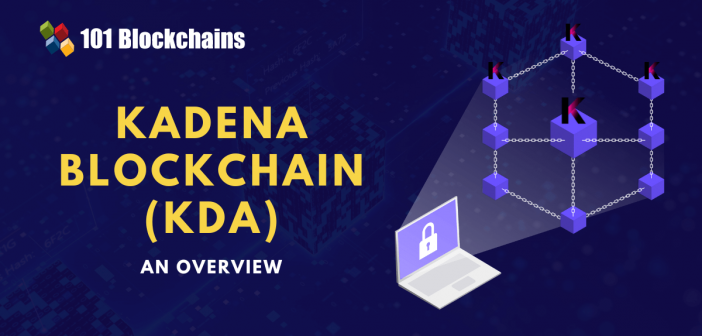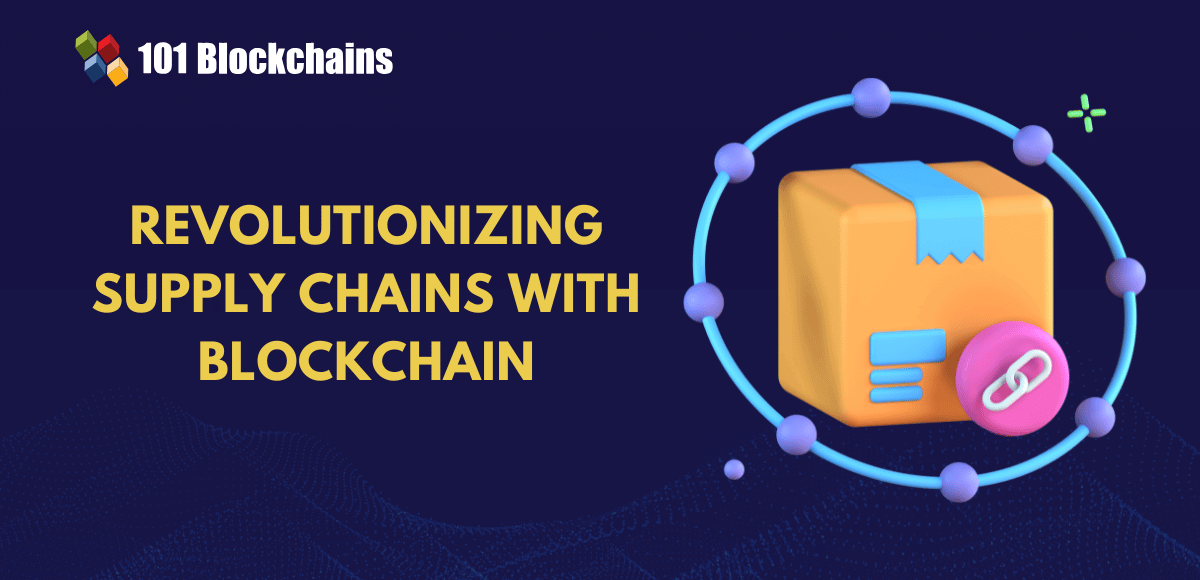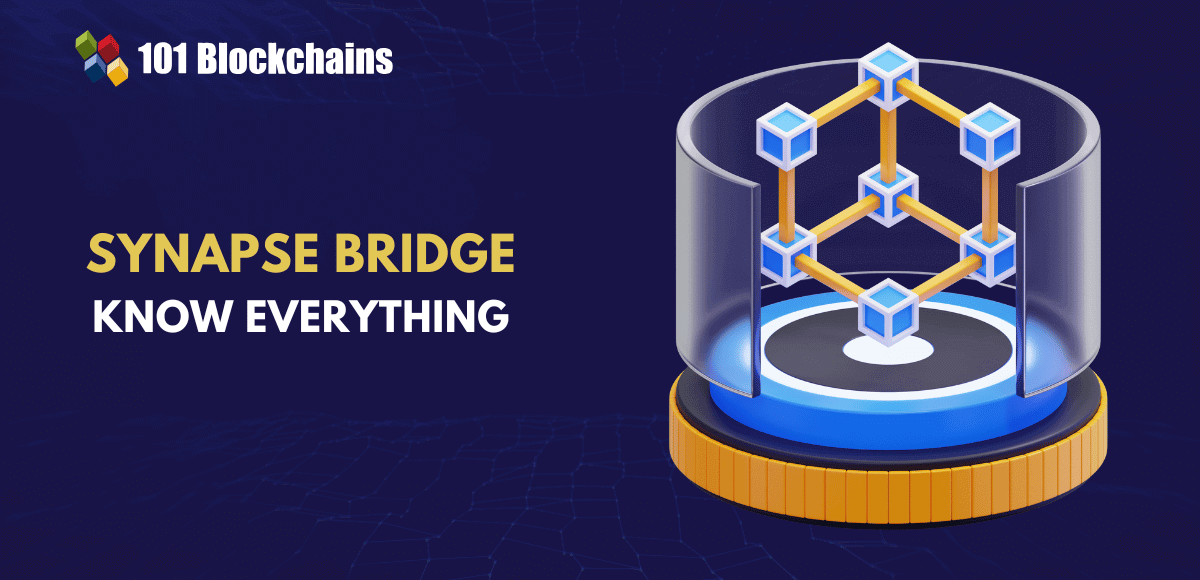Learn how blockchain truly works, master key definitions, and uncover what makes smart contracts so "smart." Dive into the fundamentals, gain valuable insights, and start your blockchain journey today!

- Blockchain
James Howell
- on April 21, 2023
An Overview of Kadena Blockchain (KDA)
Blockchain has soared in terms of popularity and has found adoption across many industries. At the same time, concerns regarding blockchain safety have also evolved over the course of time. Since cryptographic security is one of the key value propositions of blockchain technology, you should think about how blockchain technology can ensure security. The vision of Kadena blockchain relies profoundly on addressing the requirement of security with blockchain technology.
It can ensure attributes of the Proof of Work consensus algorithm, which has safeguarded Bitcoin for a long time. Doesn’t it round up back on the problem of energy efficiency in the operations of blockchain networks? You can find a credible answer through a detailed introduction to Kadena and special highlights of its work. The following post offers easy answers to some of the common doubts regarding Kadena and its significance.
Build your identity as a certified blockchain expert with 101 Blockchains’ Blockchain Certifications designed to provide enhanced career prospects.
Problem with Mass Adoption
The best approach to start an introduction to Kadena would be an overview of the issues with mass adoption. The basics of Kadena blockchain explained for beginners must emphasize the problems such as price volatility, usability issues, and scams. One of the biggest problems which have hindered mass adoption in the blockchain and crypto industry is scalability. When users adopt a cryptocurrency in large numbers, the network must be capable of handling the increase in traffic. In addition, transaction finality is also a crucial metric for defining the scalability of a blockchain.
Lower transaction speed and longer transaction finality times can result in negative user experiences. In addition, low scalability can also lead to higher fees, which served as a notable reason for Ethereum transitioning to the Proof of Stake consensus protocol. The answers to “How does Kadena blockchain work?” would revolve around resolving the problem of scalability.
Why do blockchain networks struggle to achieve scalability? Blockchain networks cannot achieve security, scalability, and decentralization together. For example, Bitcoin offers formidable security and decentralization, albeit with the setback of limited scalability. On the other hand, new blockchain networks feature the advantages of decentralization and scalability with the Proof of Stake consensus mechanism. However, such blockchain networks have to compromise in terms of security.
Want to become a Cryptocurrency expert? Enroll Now in Cryptocurrency Fundamentals Course
Definition of Kadena
The blockchain trilemma problem served as the root of the foundation of Kadena. The founders of Kadena envisioned a radical change in the chain technology alongside the interactions with the business landscape. With the help of a proprietary chain architecture, Kadena provided the tools that could help businesses capitalize on the value of blockchain technology. As a matter of fact, Kadena is the first layer-1 or L1 blockchain which can offer permanent solutions for scalability. At the same time, Kadena also offers the assurance of security with Proof of Work consensus alongside the benefits of decentralization.
With a clear response to “Is Kadena a layer 1 blockchain?” you might have doubts regarding the advantage of scalability. What does Kadena have that you cannot find in Bitcoin? Kadena is different from Bitcoin as it follows a unique architecture with multiple parallel blockchains arranged with a Proof of Work consensus. The consensus could facilitate a rise in throughput alongside resolving the scalability issues without reducing security and decentralization.
Want to become a bitcoin expert? Enroll Now in Getting Started with Bitcoin Technology Course
Unique Highlight of Kadena
The review of responses for “How does Kadena blockchain work?” would draw attention to the multi-chain architecture based on Proof of Work consensus. The architecture has been titled ‘Chainweb,’ which helps in scaling up to almost 480,000 transactions per second. Around 20 chains can operate simultaneously on the network, thereby helping in adapting to new scalability demands.
As compared to Bitcoin and Ethereum, with a TPS of 7 and 15 to 25, Kadena is a humongous improvement. Kadena achieves the improvement in scalability through smart contracts, which facilitate cross-chain interoperability. The use of multiple Proof of Work-based blockchains helps Chainweb in ensuring energy efficiency even with constantly increasing network demand.
Excited to learn the basic and advanced concepts of ethereum technology? Enroll Now in The Complete Ethereum Technology Course
Working of Kadena
The Chainweb is not the only highlight in the working of the Kadena KDA network. You can find a private blockchain at the second layer, known as Kuro, and both layers can support the scalability demands. Both blockchains work with each other in a multiple-braided chain approach. Chainweb can achieve scalability by sharding transactions.
However, a detailed understanding of Kadena architecture could help you identify the relevance of every layer and chain. The complex design can help in combining the Proof of Work mining model with the desired level of privacy. Here is an overview of the important elements in the architecture of Kadena.
-
Chainweb
Chainweb is the core element of the Kadena blockchain, which serves a network of 20 chains. The 20 chains in Chainweb connect with each other to power the Kadena chain. You can find answers for “Is Kadena a layer 1 blockchain?” with references to Chainweb, which serves as the foundation of the layer-1 network in Kadena.
Chainweb runs through sharding, which involves the distribution of the load across 20 different chains. Subsequently, users could set up their accounts on a chain with limited congestion, which allows lower transaction costs. In addition, Chainweb offers the advantage of Simple Payment Verification or SPV smart contract protocol for ensuring cross-chain interoperability.
The understanding of the layer 1 public blockchain architecture in Chainweb emphasizes on effective advantages of interoperability. Chainweb has been subject to different types of stress tests at 8000 TPS for proving network resiliency and efficiency. The code for Chainweb has been created in Haskell, which also serves as the programming language for the Cardano blockchain.
Enroll now in the Blockchain Scalability and Interoperability Mastery Course to learn the skills needed to develop faster, scalable, robust, and interoperable dApps.
-
Layer 2 Blockchain
The detailed architecture of the Kadena blockchain explained for beginners would refer to the layer-2 solution of Kadena, i.e., Kuro. It is a private blockchain tailored for commercial applications with the use of smart contracts. Layer 2 on Kadena or Kuro serves as a valuable solution for businesses that want to send private transactions without leaking customer data.
On top of it, Kuro also facilitates flexibility for the execution of coin swaps on the Kadena network through decentralized exchanges. While transactions on the Kuro chain require gas fees, just like Ethereum, Kadena has come up with an innovative solution. Kadena introduced the Gas Stations in 2020, which help in covering up the swap fees, thereby enabling zero-fee transactions.
-
Pact
Pact is an important highlight in any guide on Kadena as it serves the role of the smart contract programming language. It has been created specifically to drive the growth of DeFi ecosystems in Kadena. Interestingly, the Kadena blockchain is different from other blockchains with the facility of a Turing-complete smart contract language in Pact. The Turing-complete nature of Pact implies that it includes all functions which can be executed by computers. For instance, C and C++ are Turing-complete languages.
How is Pact useful for the Kadena KDA network? Popular smart contract programming languages, like Solidity, are not Turing-complete, thereby implying the availability of a limited function set. In addition, the use of Haskell for the creation of Pact implies that only expert programmers can write smart contracts in Pact. The complexity of writing Pact smart contracts has been holding back DeFi activity on Kadena. Interestingly, Kadena has planned an effective solution for the Kadena ecosystem with the Kaddex project for facilitating trustless trading and coin swapping.
Want to get an in-depth understanding of Solidity concepts? Become a member and get free access to Solidity Fundamentals Course Now!
Tokenomics of Kadena
Another fundamental highlight of Kadena would point at its tokenomics. You must note the facility of two distinct wallets for Kadena, such as Chainweaver, and Zelcore. Users should have a careful understanding of Kadena tokenomics and best practices for using Kadena blockchain explorer to ensure safer transactions.
With the blockchain explorer, Kadena users can monitor the multiple chains in use. The next important highlight in understanding the tokenomics of Kadena would point at the KDA token. KDA is the native token of the Kadena ecosystem and helps in paying transaction fees on the blockchain.
The market capitalization of Kadena KDA is around $275 million, and the token achieved an all-time highest price of $25 in November 2021. Just like many other altcoins, the price of KDA tokens is also related to that of Bitcoin. As of now, the KDA token serves as a useful tool for transactions on the network. In addition, it would serve useful value advantages for DeFi and NFT trading in the future.
Another important highlight in the tokenomics of Kadena is the limit on the maximum supply of KDA tokens. The maximum supply of Kadena is 1 billion, which are also referred to as ‘emissions.’ The emissions would be disbursed over the period of next 120 years following its launch in 2019. As of now, the circulating supply of Kadena tokens must be around 184 million.
Another important highlight of the blockchain tokenomics visible in Kadena blockchain explorer points to the distribution of KDA tokens. The allocation of Kadena tokens has been divided into multiple groups in the following manner,
- Miners- 70%
- Reserve- 20%
- Seed/investor- 6%
- Developers- 3%
Miners receive the lion’s share of the Kadena KDA token distribution and future emissions. Why? Miners take responsibility for the security of Kadena, thereby validating their claim for the reward. As Kadena plans on introducing new solutions like the Kaddex trading platform and NFT marketplaces, the KDA token price could bounce up. At the same time, users could not avail of staking facilities for Kadena in the Chainweaver wallet. However, users can use third-party platforms for staking the KDA tokens in their possession.
Why Should Users and Businesses Choose Kadena?
The sheer range of options available for users and businesses in terms of blockchain networks can be quite overwhelming. One of the first highlights which favor Kadena blockchain is the assurance of scalability and decentralization with the security of Proof of Work consensus. The working of Kadena with a multi-chain Proof of Work architecture shows that it can accommodate more chains for adapting to the demand of scalability.
In addition, a Turing-complete smart contract programming language with Pact is a promising reason to choose Kadena for better developer experiences. On top of it, the facility of automatic bug detection on Pact can help in avoiding the common exploits visible on Ethereum. Furthermore, the Formal Verification feature on Pact ensures that you can ensure desired functionality of smart contracts.
The responses and explanation for “How does Kadena blockchain work?” would draw attention toward the capability of Kadena to compete with other cryptocurrencies. As a matter of fact, Kadena is one of the top alternatives for blockchain adoption in the global banking and financial services industry.
Conclusion
The introduction of the Kadena blockchain explained the reasons why it is a worthy competitor to Ethereum and Bitcoin blockchain. Kadena uses Proof of Work consensus through a unique Braided Chain approach involving multiple chains interconnected to each other in parallel. As a result, it can provide the security of Proof of Work while enabling scalability through the multi-chain architecture.
Interestingly, the future of the Kadena KDA network includes plans for introducing an NFT marketplace and a zero-gas DeFi trading platform, Kaddex. You can prepare for large-scale adoption of blockchain in the future by learning about the fundamentals of Kadena right now. Find out more details about Kadena right now.
*Disclaimer: The article should not be taken as, and is not intended to provide any investment advice. Claims made in this article do not constitute investment advice and should not be taken as such. 101 Blockchains shall not be responsible for any loss sustained by any person who relies on this article. Do your own research!







